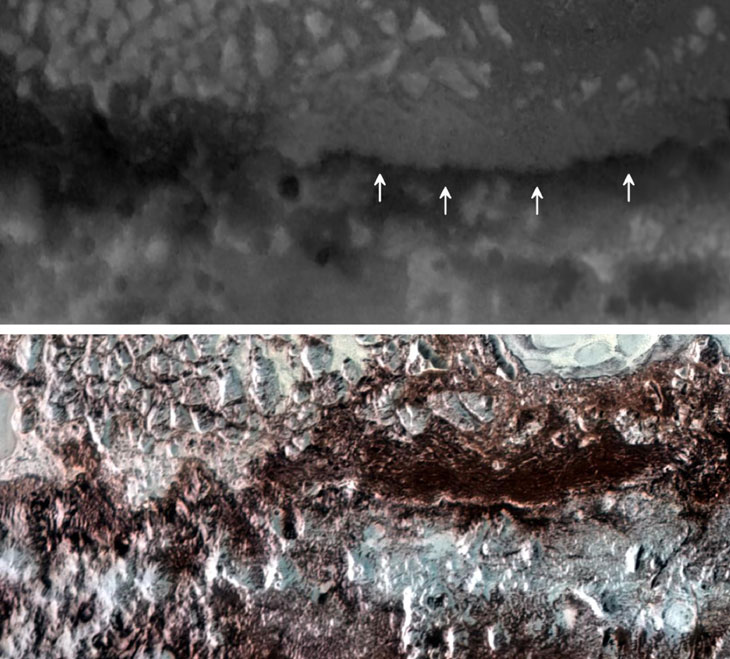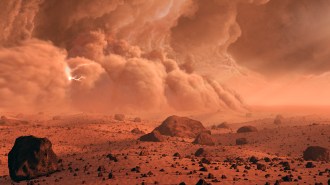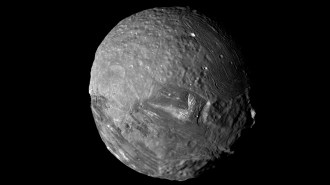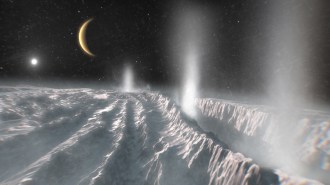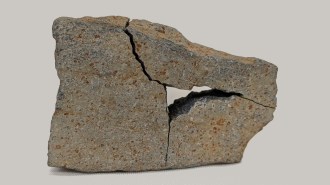First global maps of Pluto and Charon show the worlds’ highs and lows
Made with New Horizons’ data, the charts reveal never-before-seen details
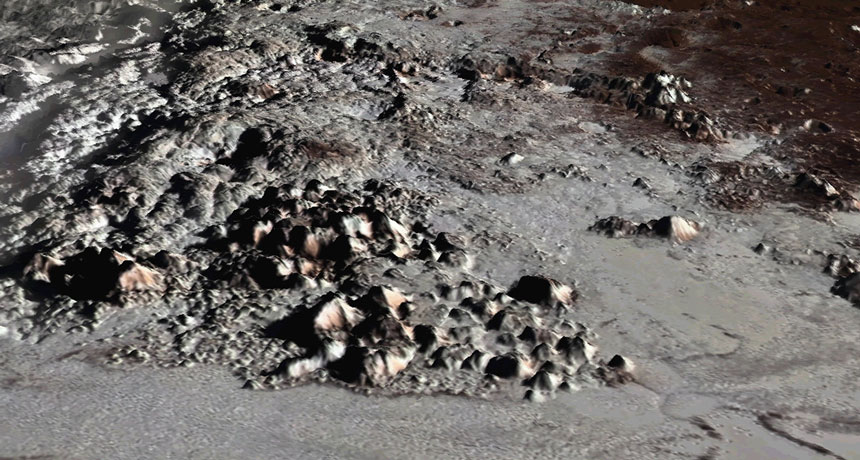
UPS AND DOWNS This view shows Pluto’s highest mountains, which rise 3 to 6 kilometers above the smooth nitrogen-ice plains of Sputnik Planitia. New maps of Pluto’s topography show more details of familiar landscapes like this one.
Paul Schenk/Lunar and Planetary Institute
